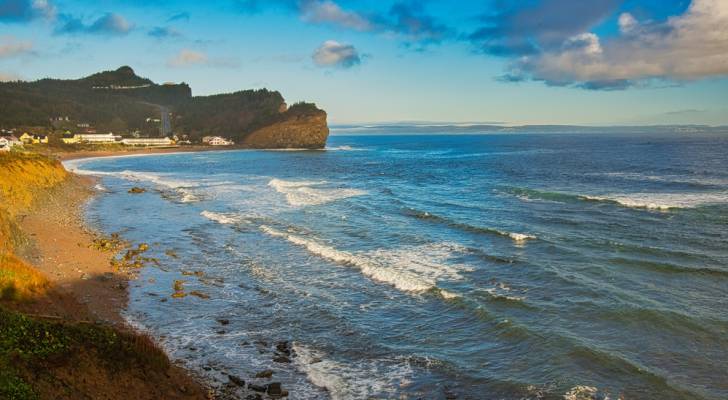
At any one of Quebec’s nine ports of call, international passengers are able to step out to enjoy what the province has to offer. Turns out, they enjoy a lot of it. According to Quebec-based consultancy Aviseo Conseil, cruise passengers spent an average of $364 a day in 2024.
"The cruise industry acts as a powerful lever for economic development in a number of Québec regions. Overall economic impact detailed in the study substantiates the structuring effect of the industry, not only with respect to port investments and regional job creation, but also with regard to enhanced tourism appeal during off-peak periods,” Marie-Andrée Blanchet, Cruise the Saint Lawrence president, said in a statement.
“International cruises provide us with a unique opportunity to enhance market exposure for our regions, our culture and our know-how with curious international visitors in search of authenticity.”
Cruising to Quebec
In 2024, international cruises brought a wave of economic activity to Québec, with travellers spending a total of $329.3 million in regions along the scenic shores of the St. Lawrence River. According to a recent study, that spending translated into $192.2 million in added value for the province’s economy and helped support 2,299 jobs across various sectors — from tourism and hospitality to transport and retail.
Cruise tourism showed strong signs of recovery, too. The season closed with 411,163 passenger-days — a measure of how many total days travelers spent visiting — marking a 2.5% increase over 2023 and a striking 54.5% jump compared to 2022. These numbers point to a steady return toward pre-pandemic travel levels and reinforce Québec’s position as a growing hub for international cruise tourism.
A gateway to different parts of Quebec
In 2024, nine ports across Québec served as vibrant gateways, allowing international cruise passengers to explore far more of the province than they might have otherwise. The Port of Québec stood out as the busiest, welcoming 108 ships and logging 218,073 passenger-days, which was the highest of any port that year.
While Québec City led in volume, Montréal stood out for spending. When lodging was included, cruise passengers docking in Montréal spent an average of $662 per person, which is the highest among all ports. Factoring in lodging across both Québec City and Montréal, the average daily expenditure per cruise passenger for Saint Lawrence-based cruises climbed to $442.
Beyond the major cities, the economic ripple effect of cruise tourism extended into various regions. The Saguenay-Lac-Saint-Jean area, for example, generated $20.6 million in added economic value — second only to Québec’s capital region. Other regions that benefited from international cruise traffic included Montréal, La Mauricie, the North Shore, and Gaspé-Îles-de-la-Madeleine.
These visits also brought a significant influx of foreign currency. International cruise passengers contributed roughly $167 million in foreign exchange — a remarkable 91.6% of all cruise-related tourism spending — helping power Québec’s broader tourism sector, which sees around $4.1 billion in foreign currency annually.
From economic impact to regional exposure, cruise tourism continues to anchor itself as a valuable asset to Québec’s growing travel industry.
This article provides information only and should not be construed as advice. It is provided without warranty of any kind.